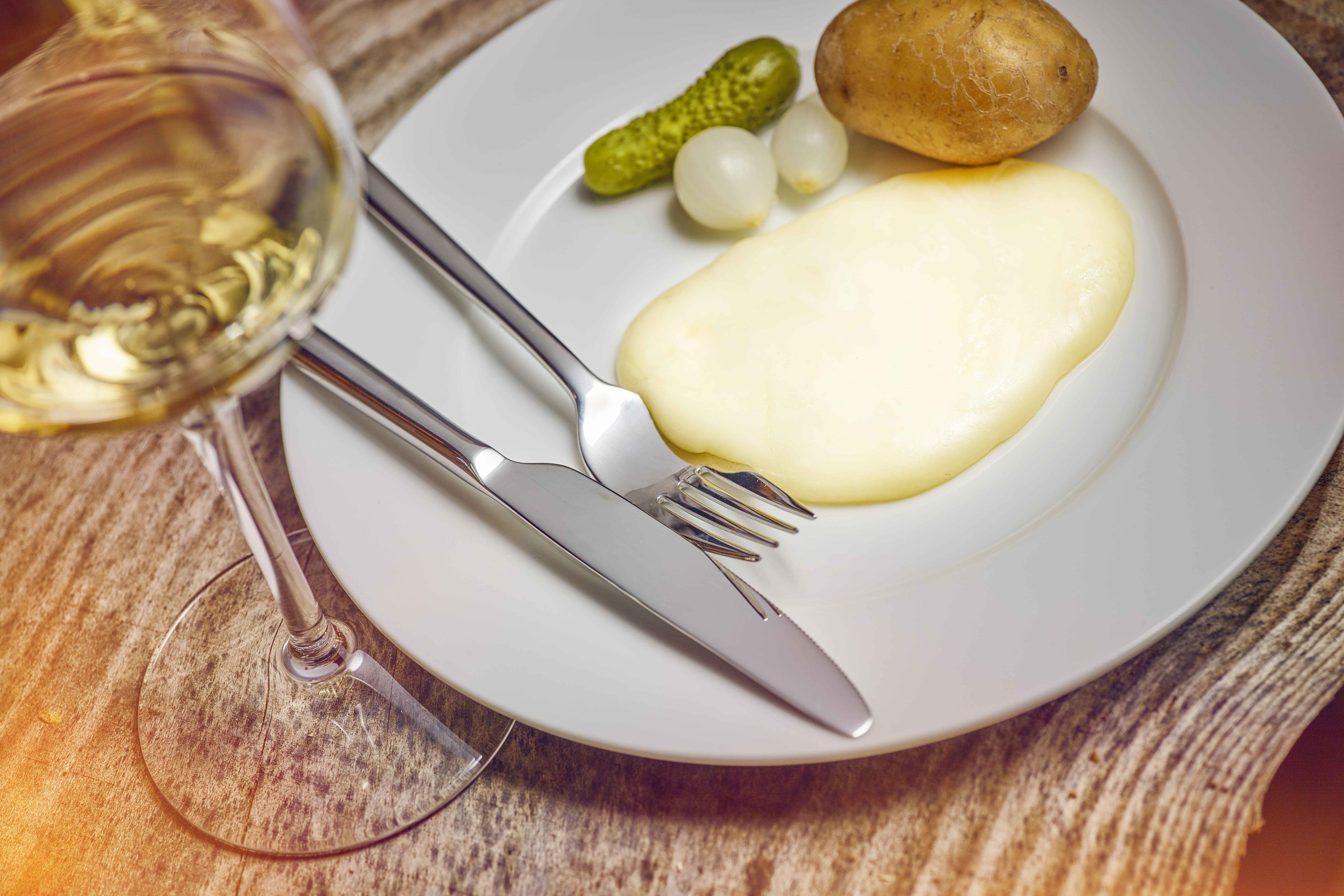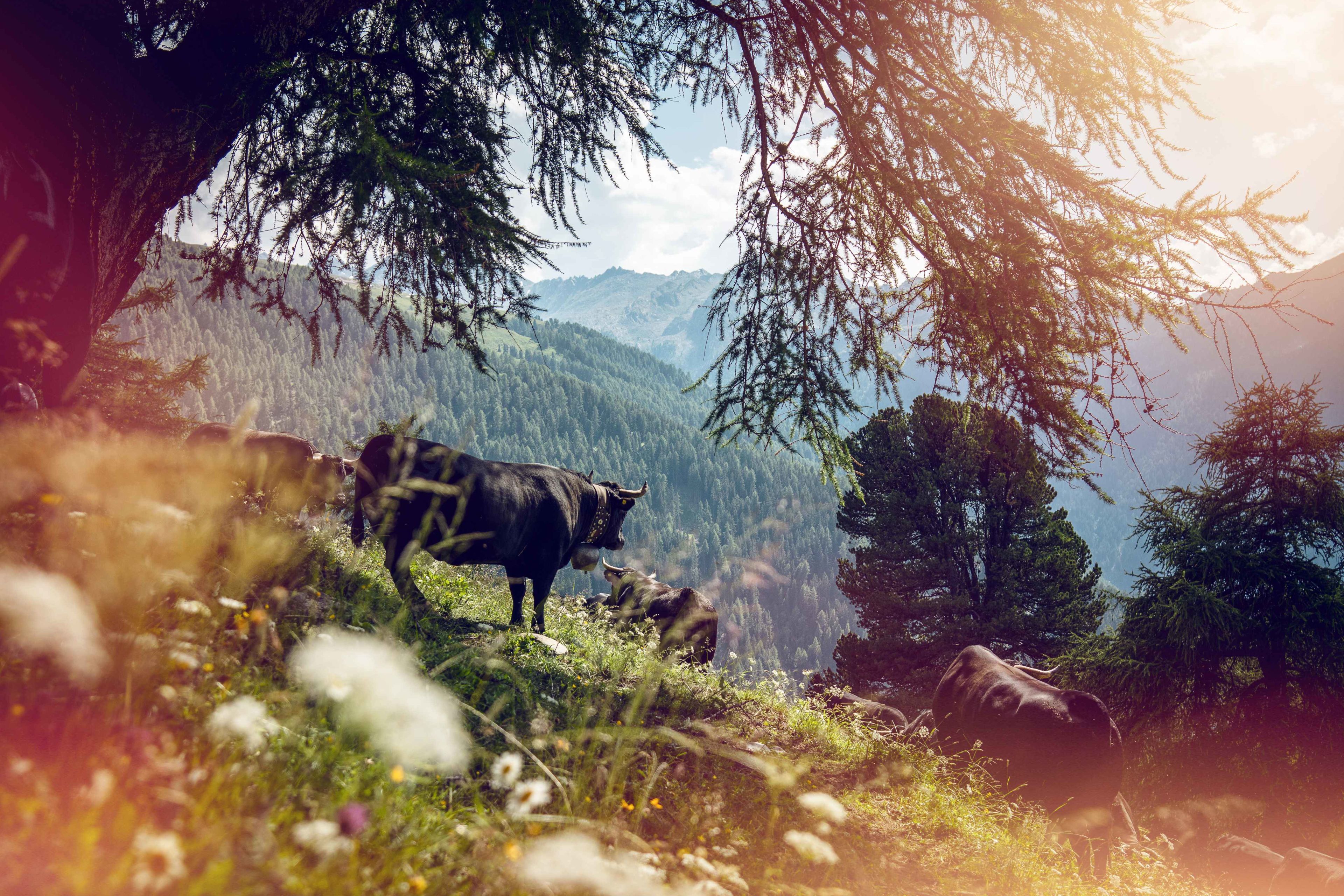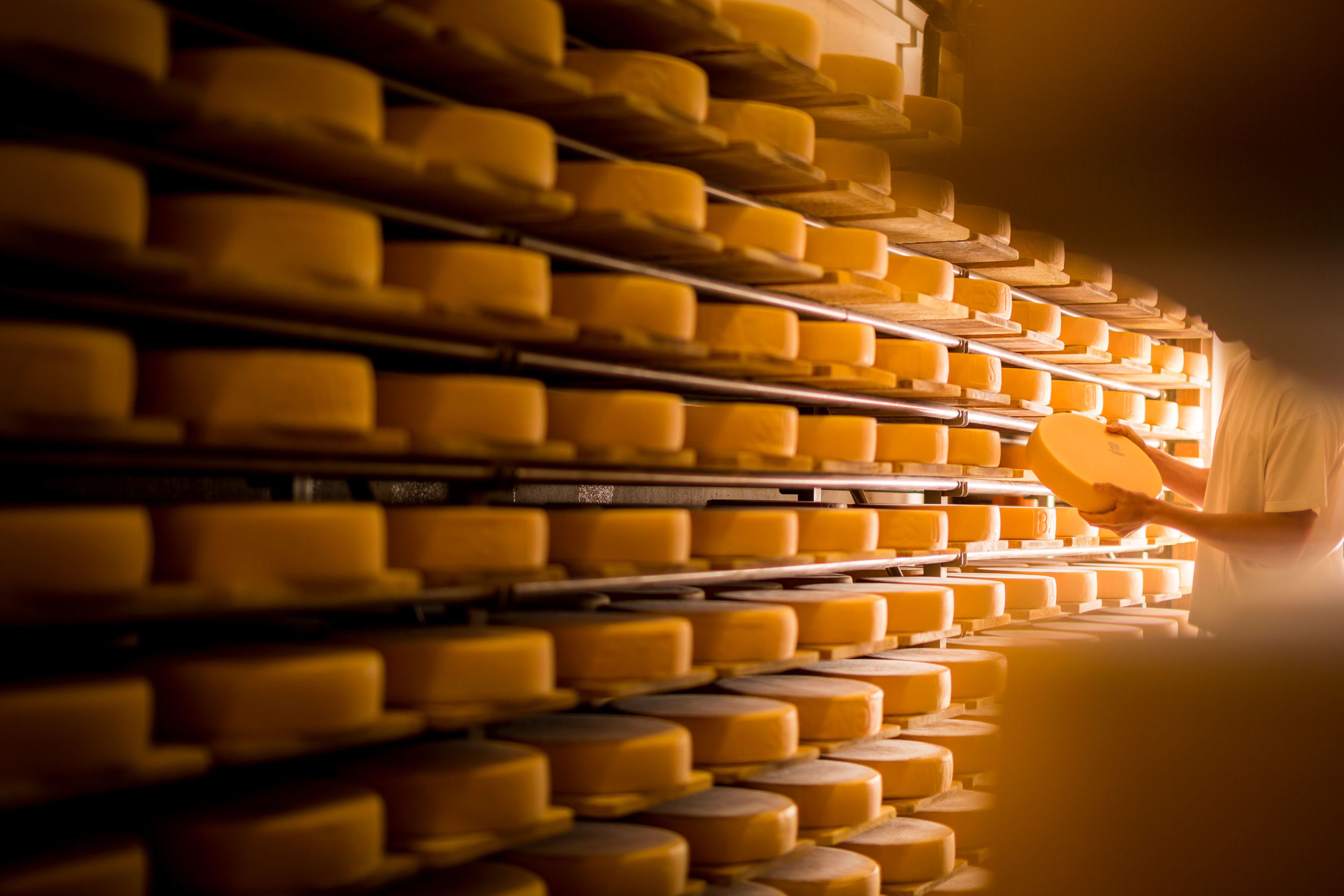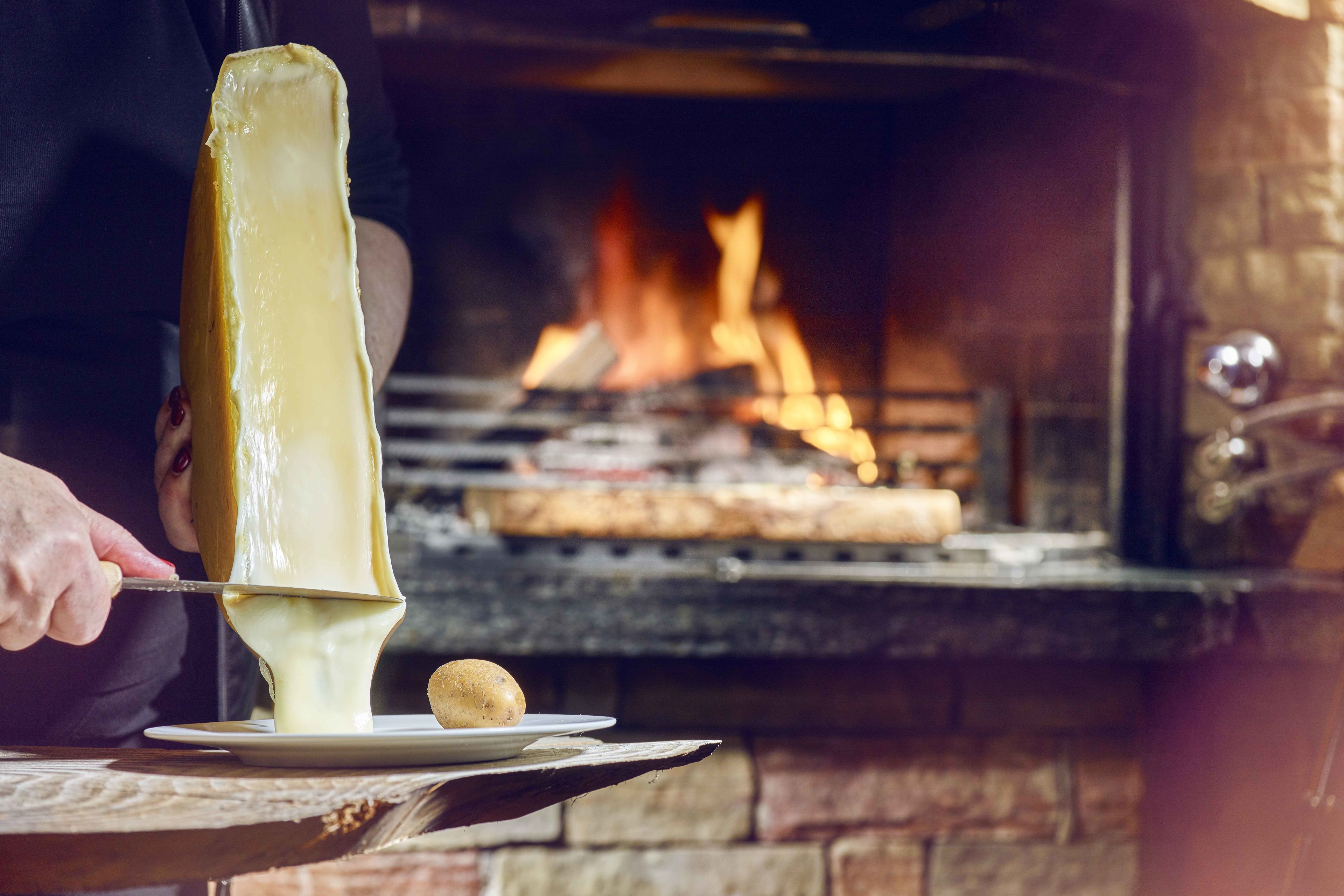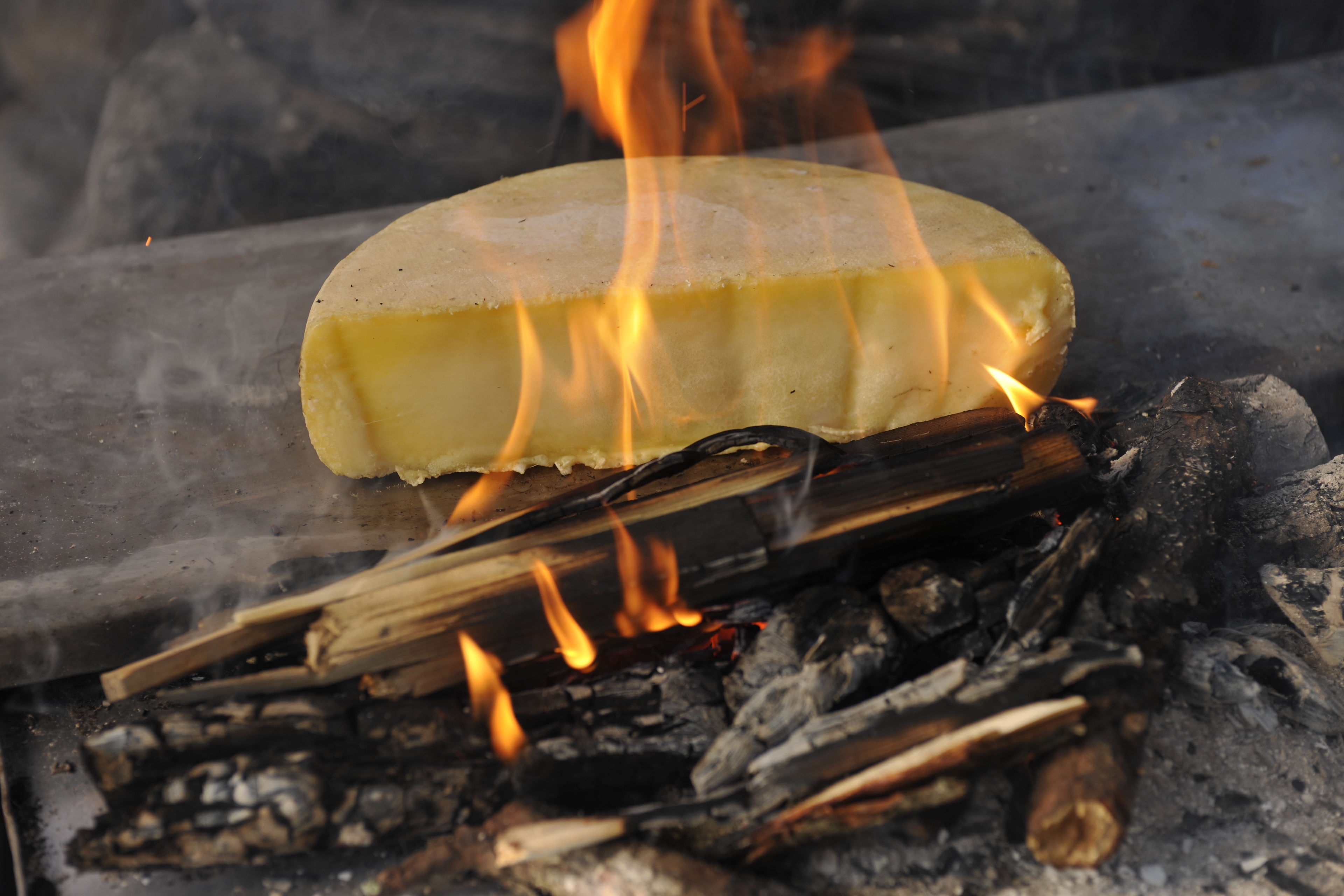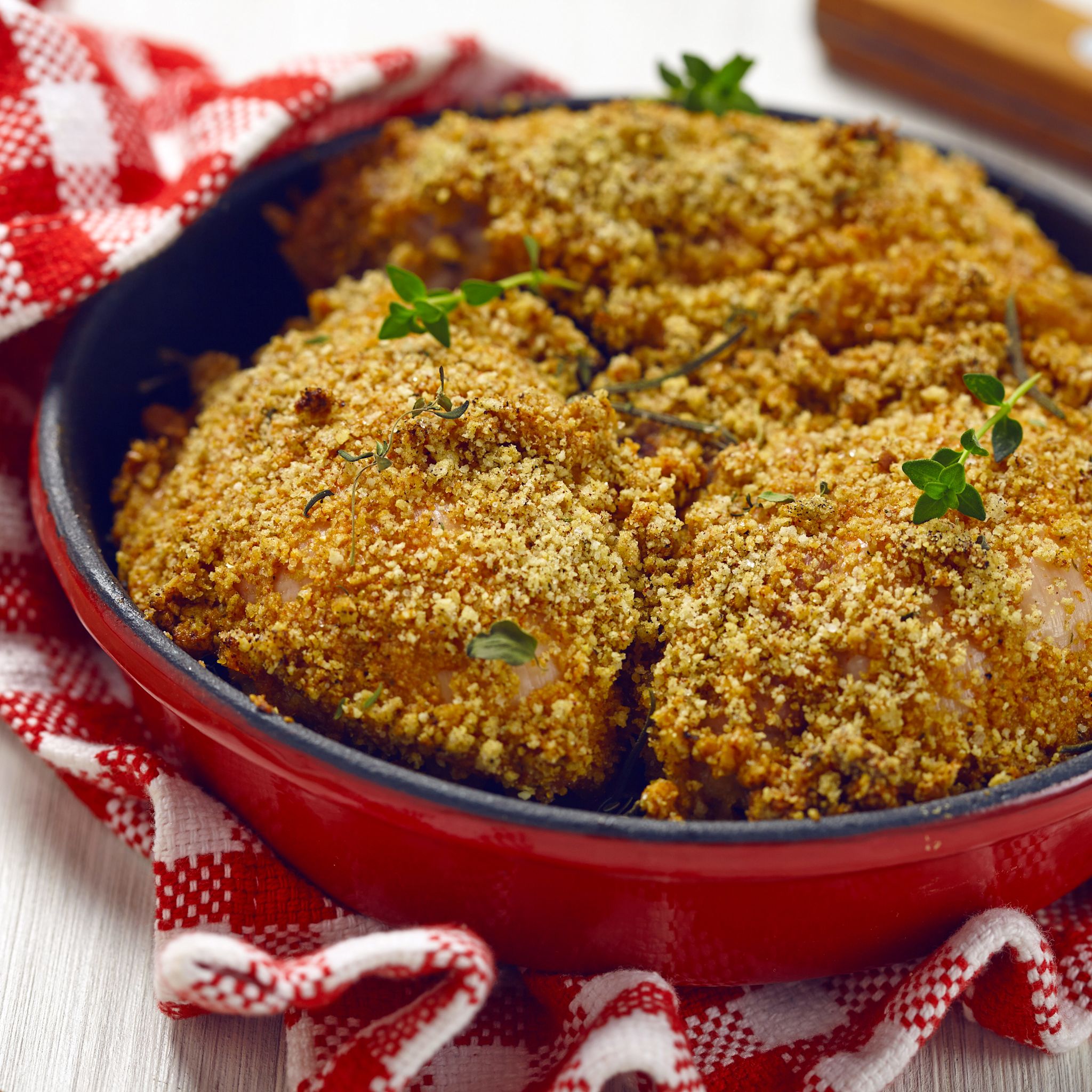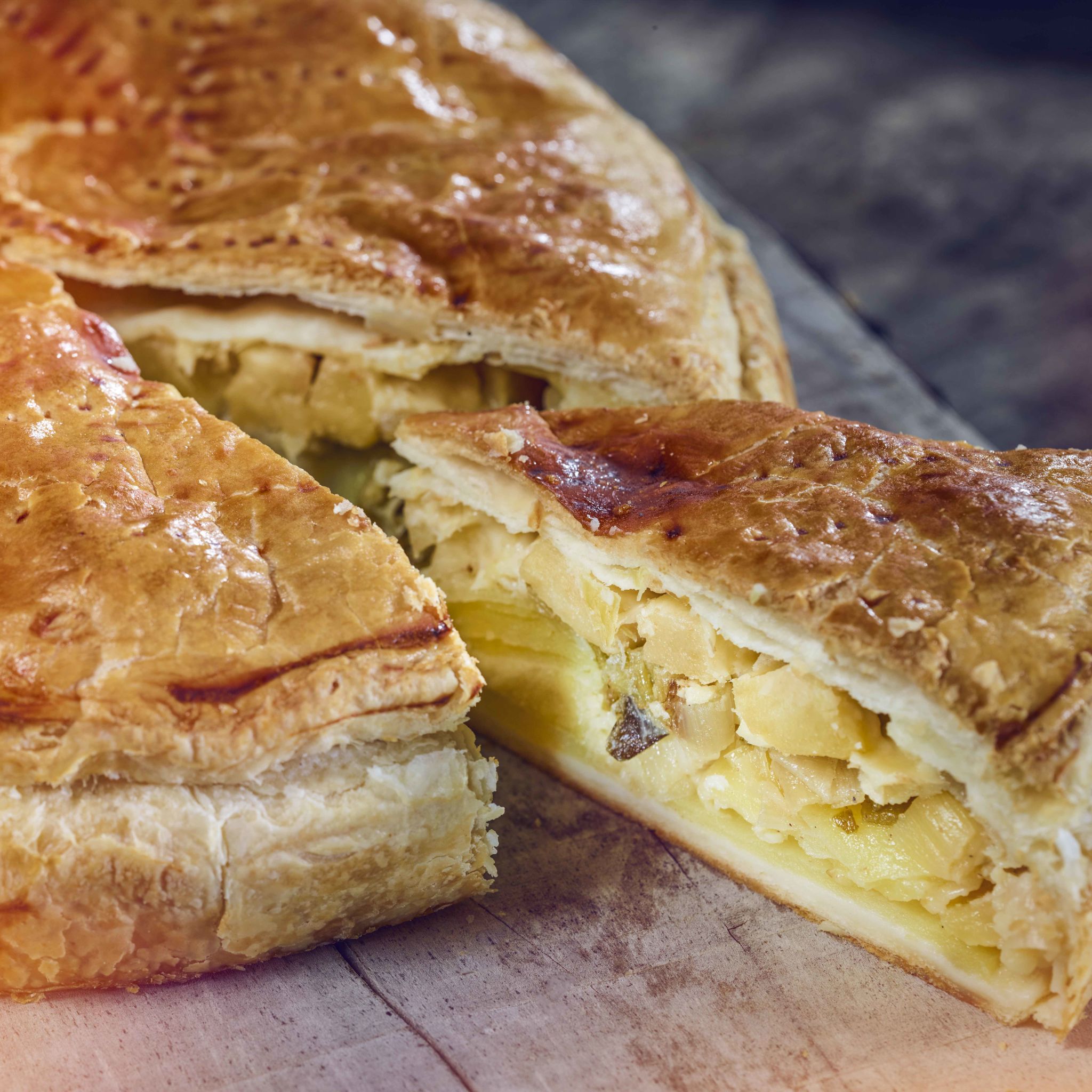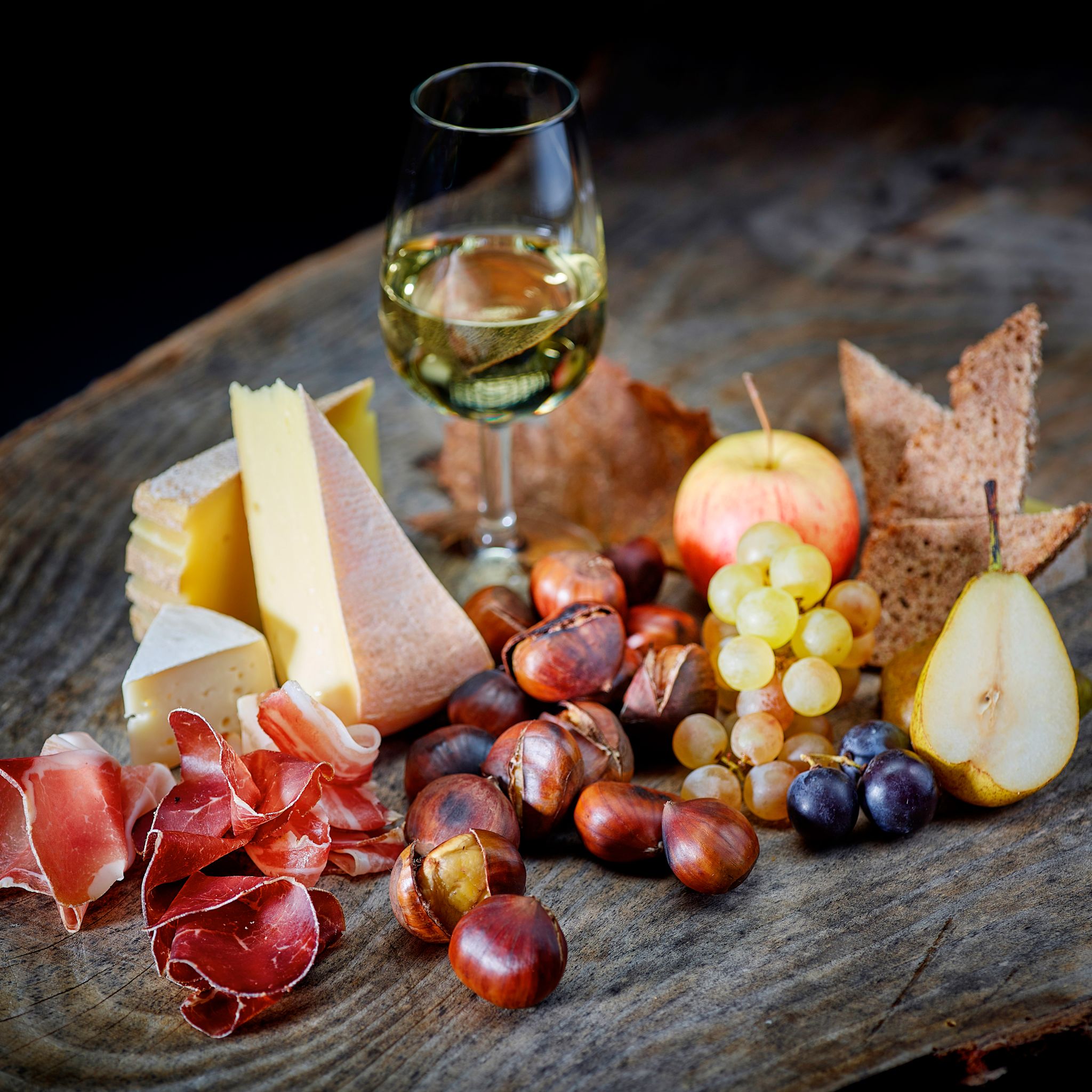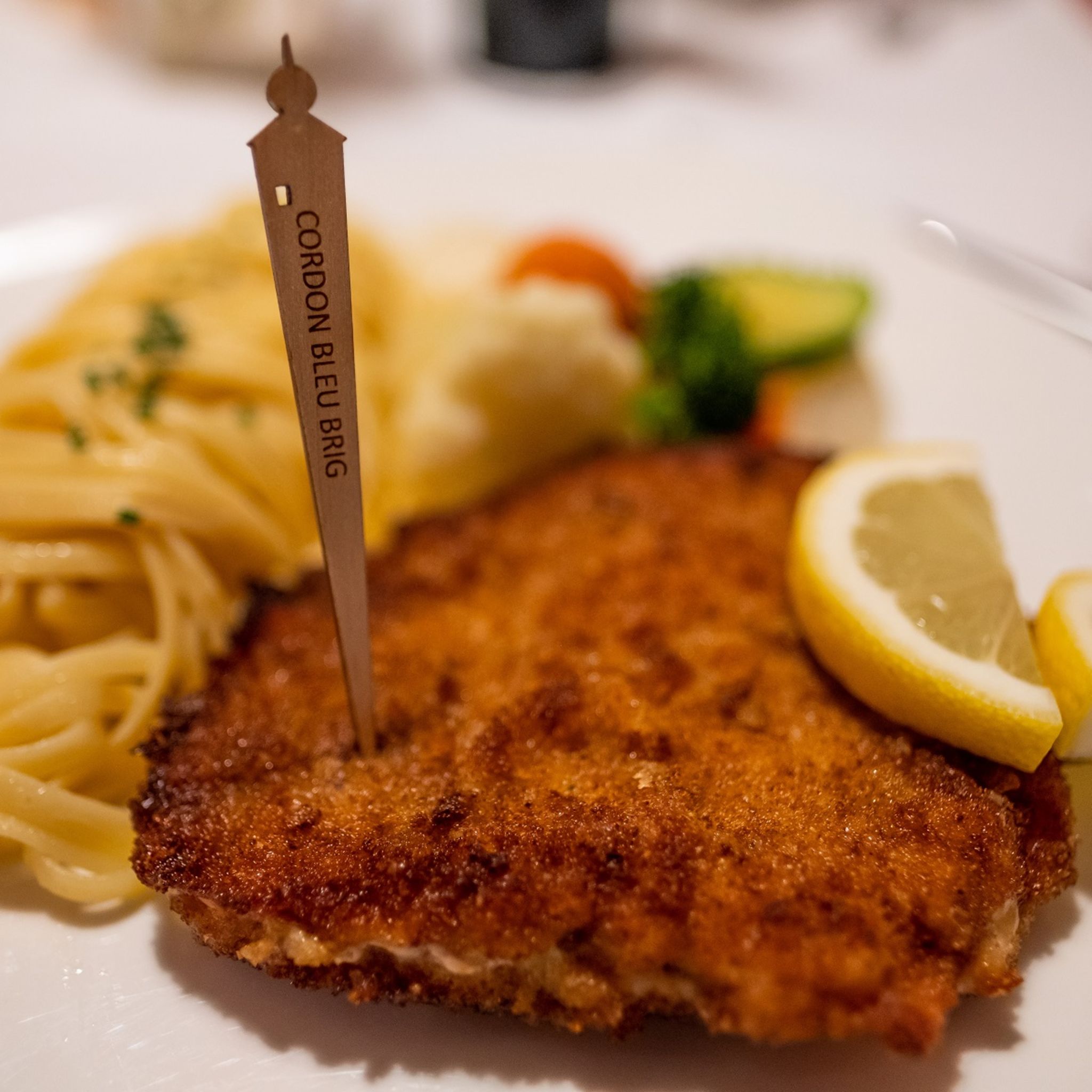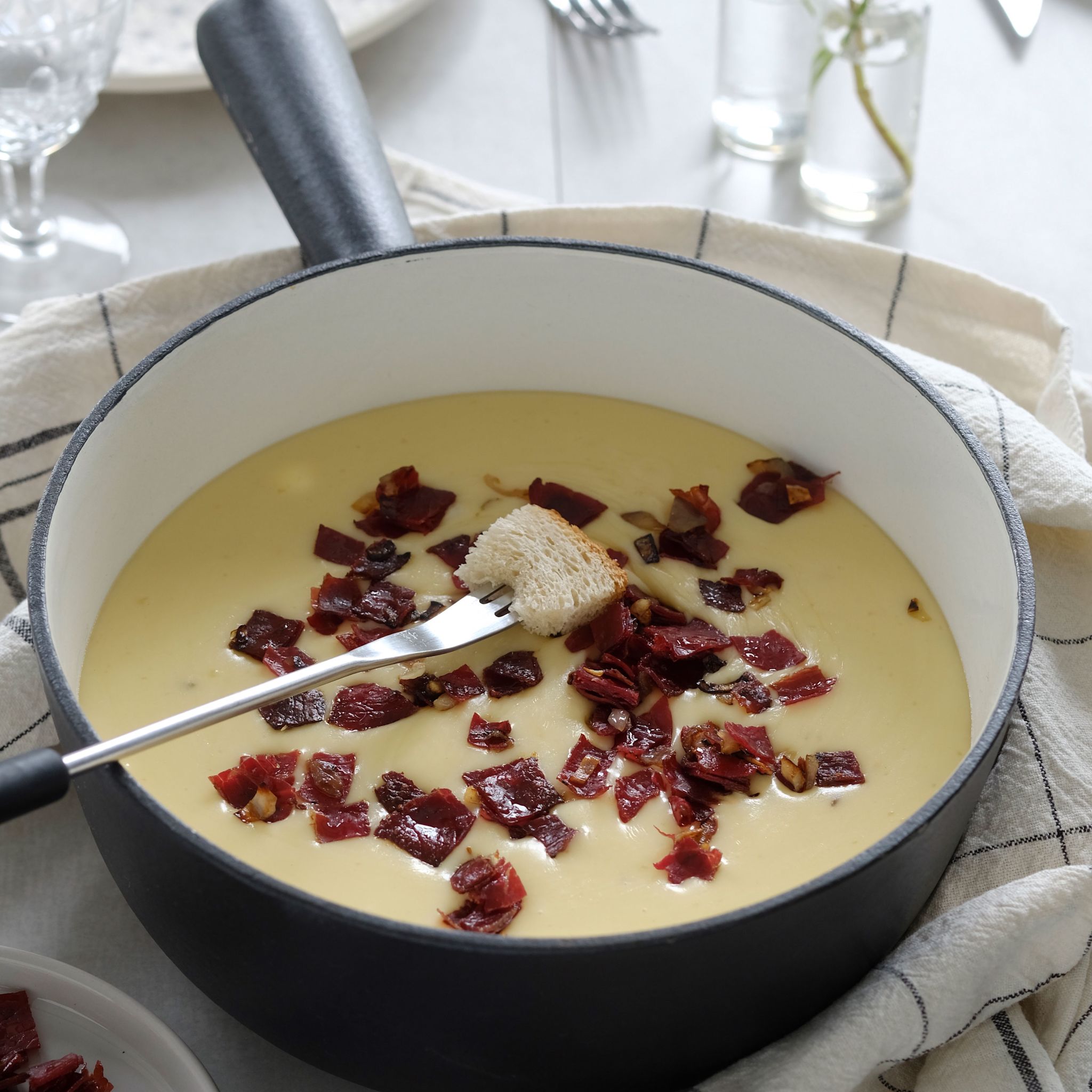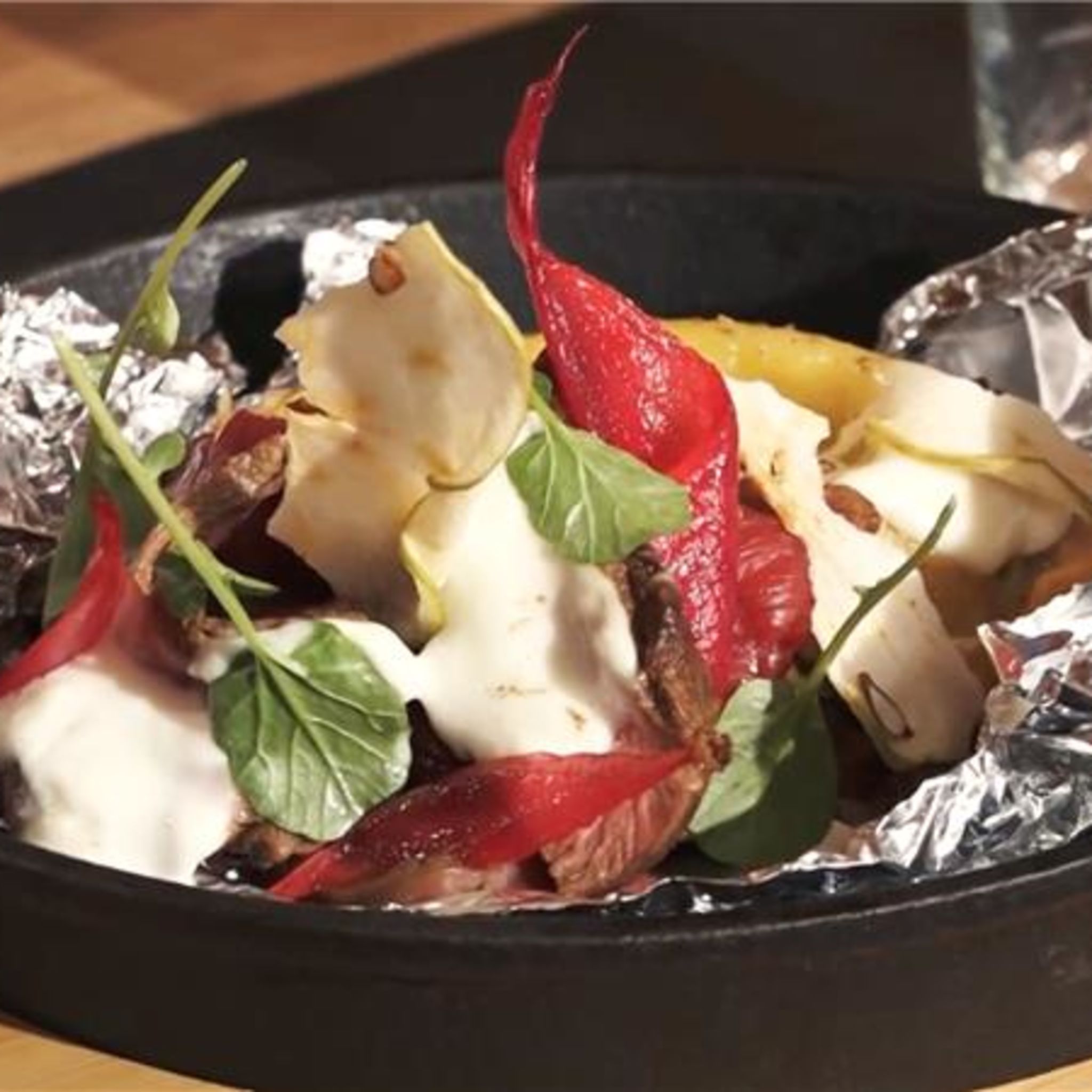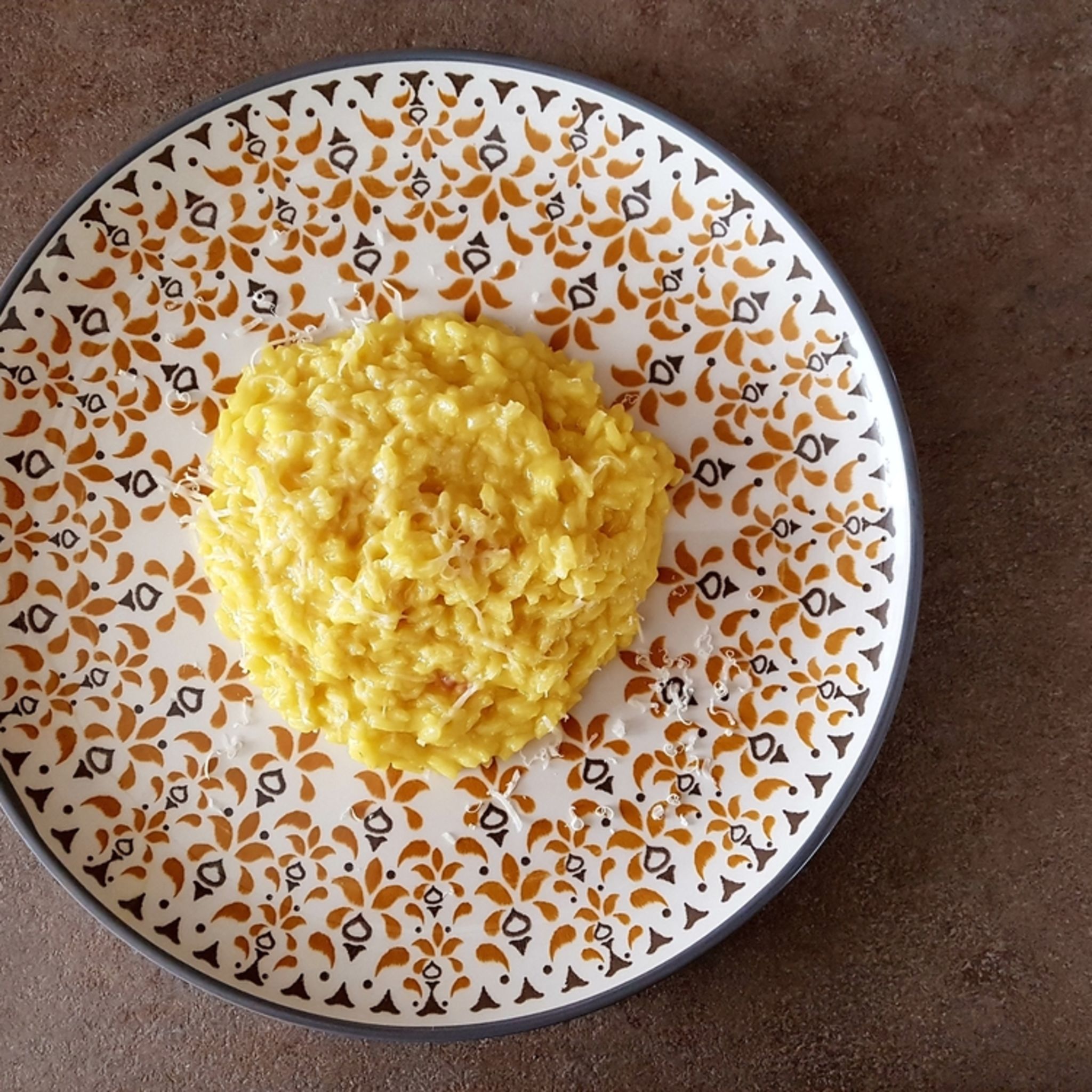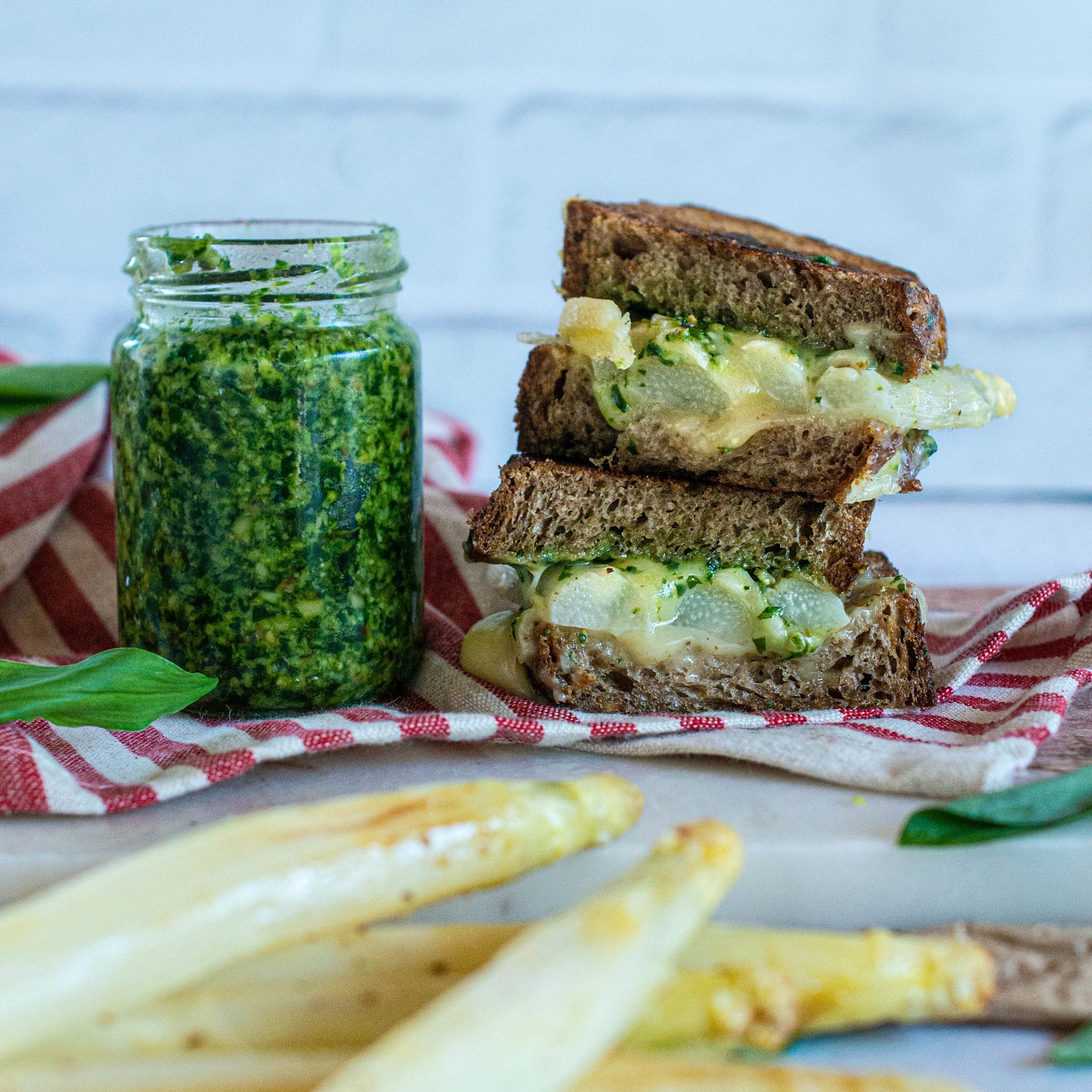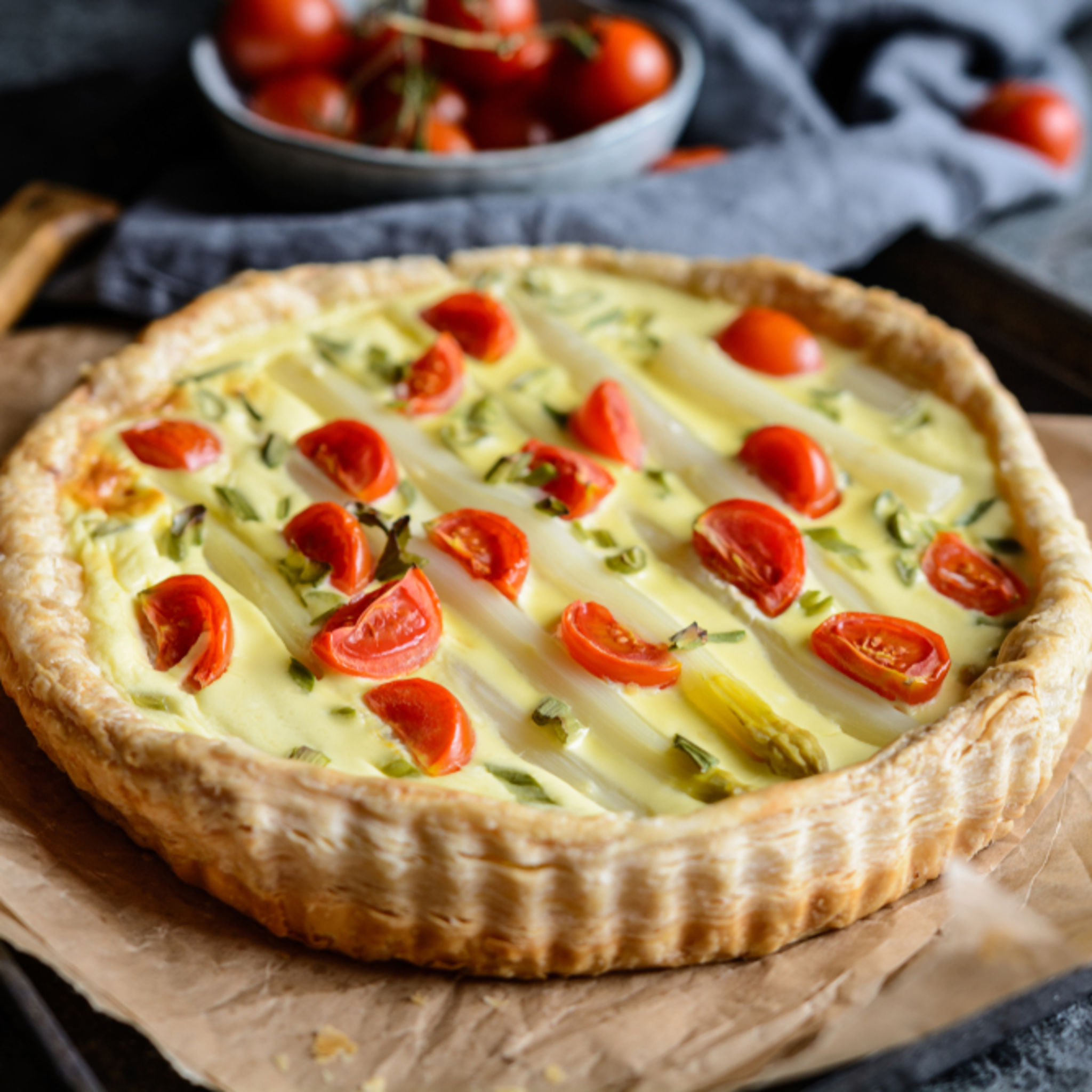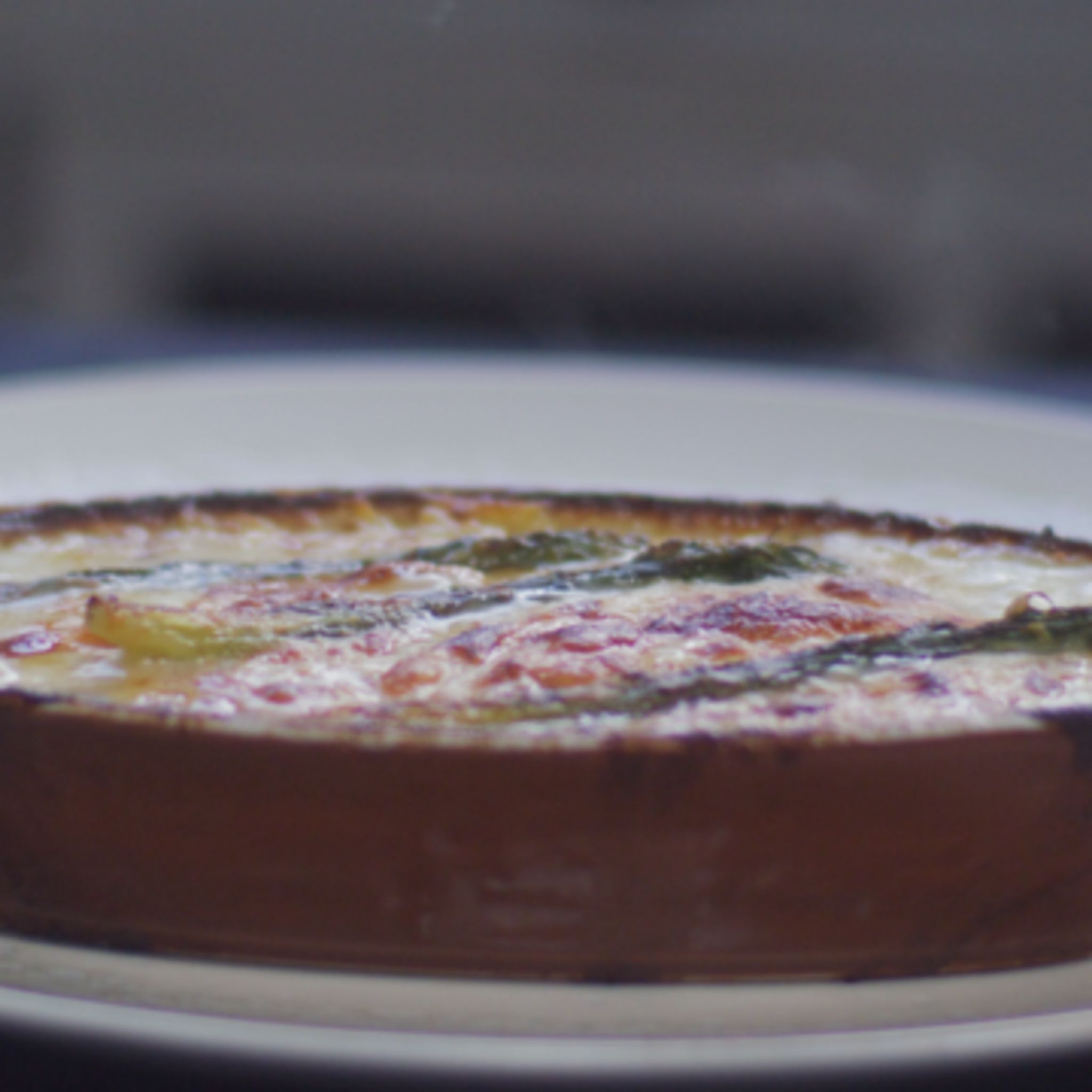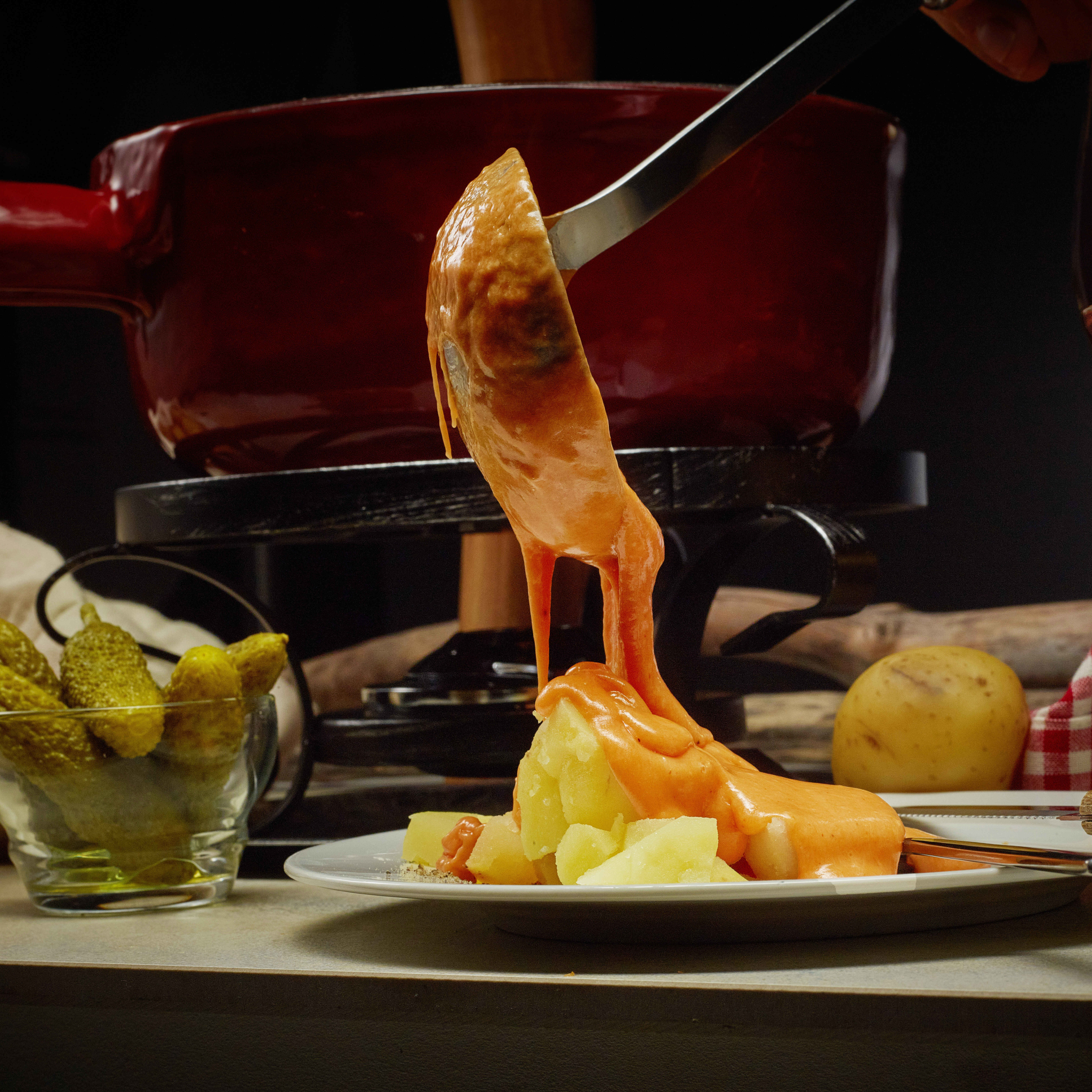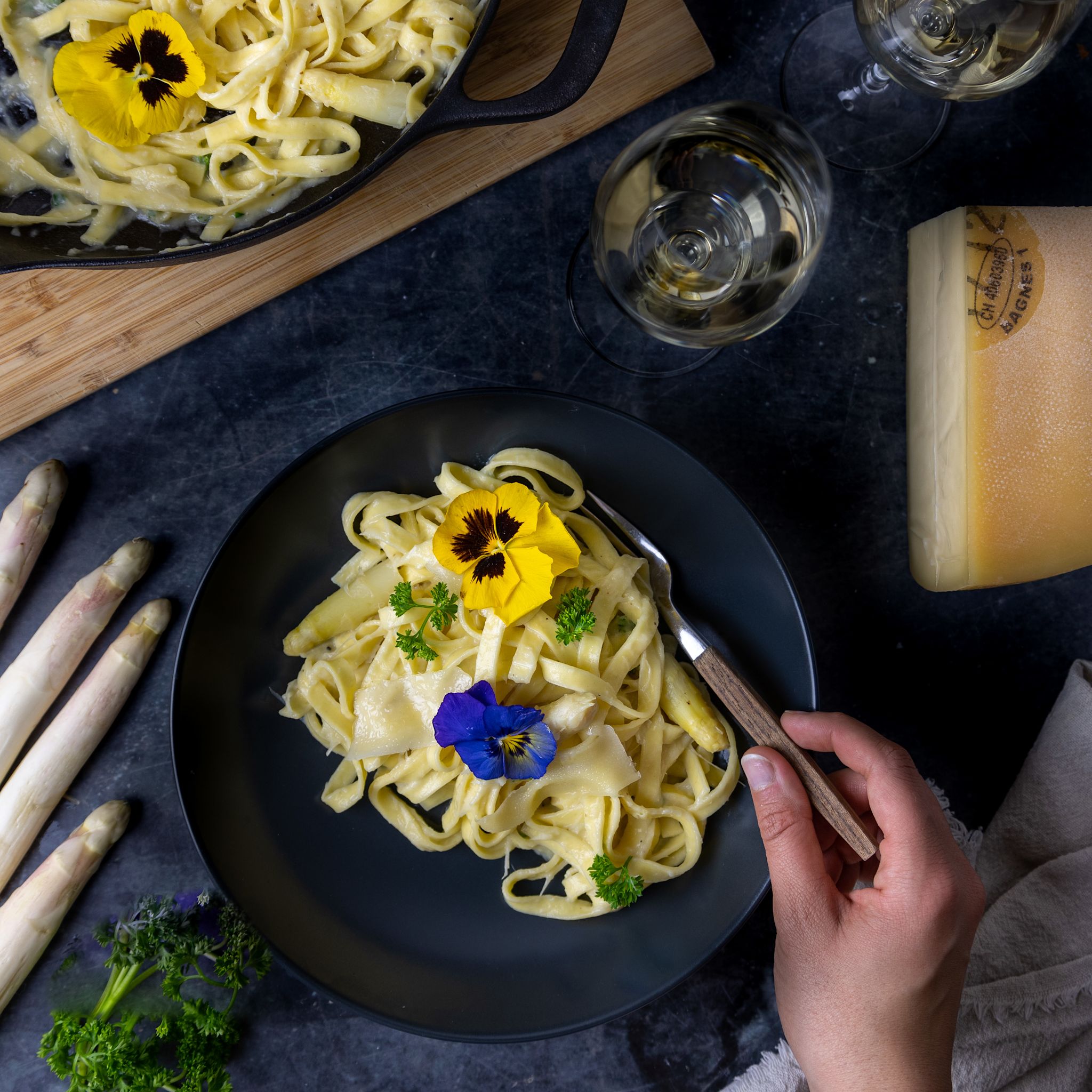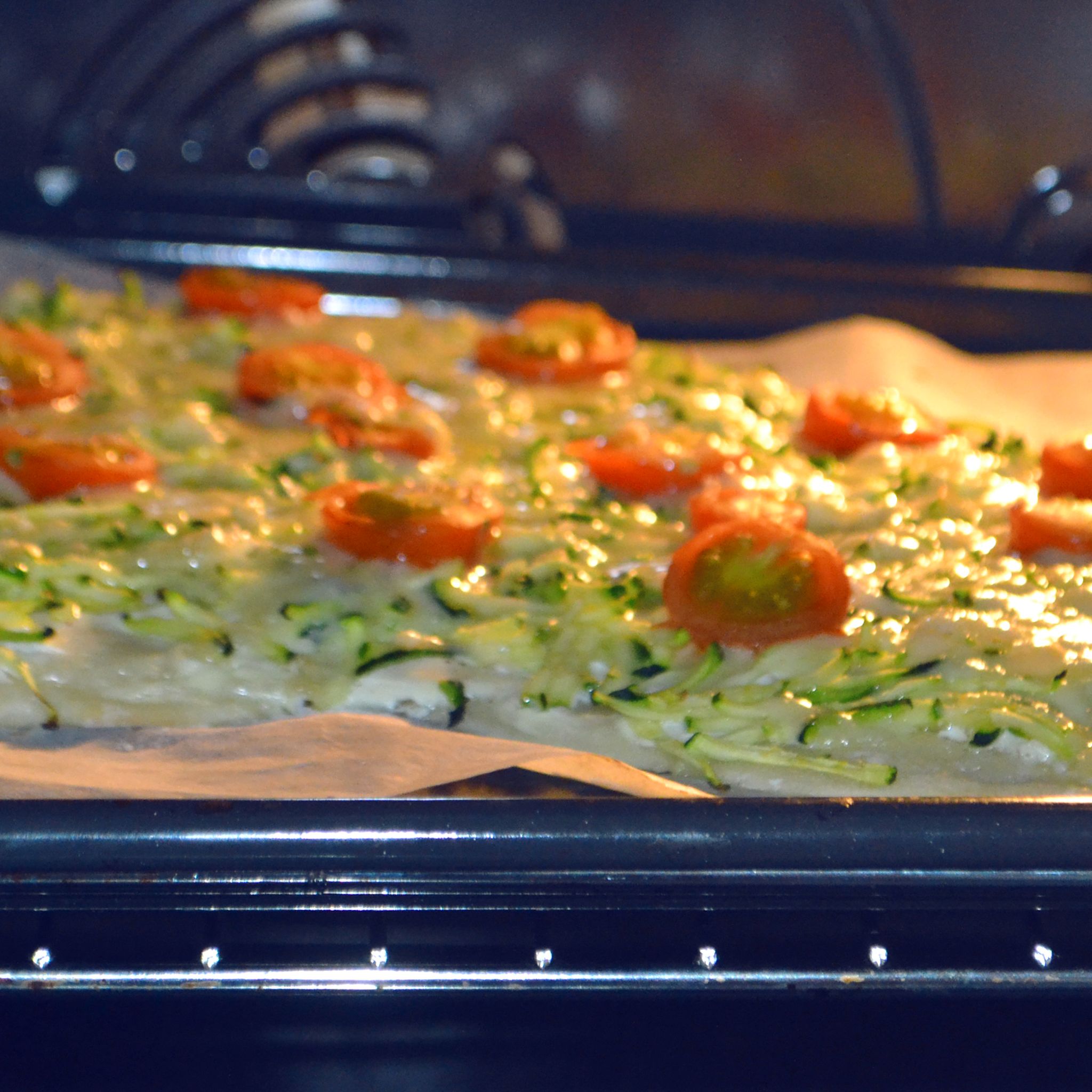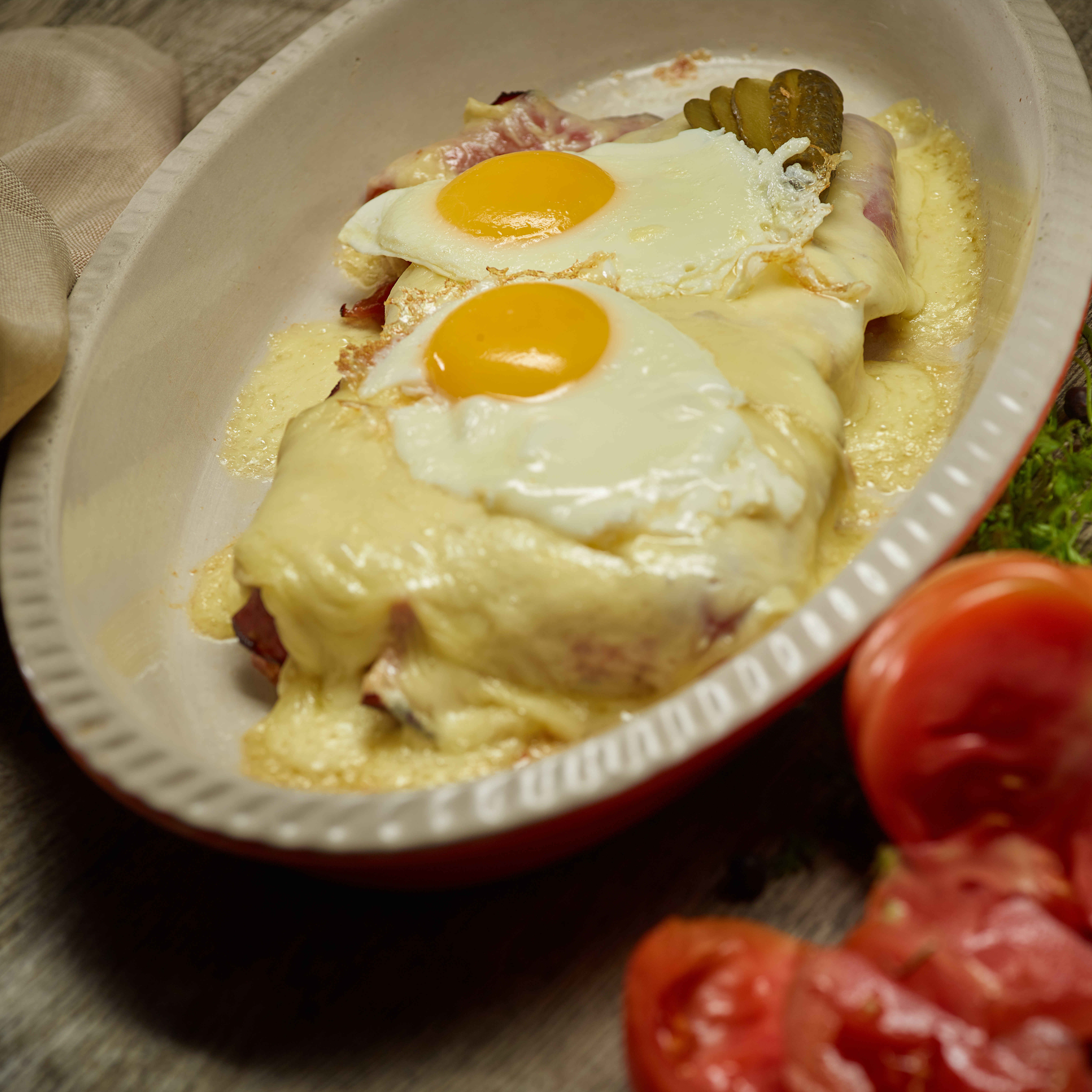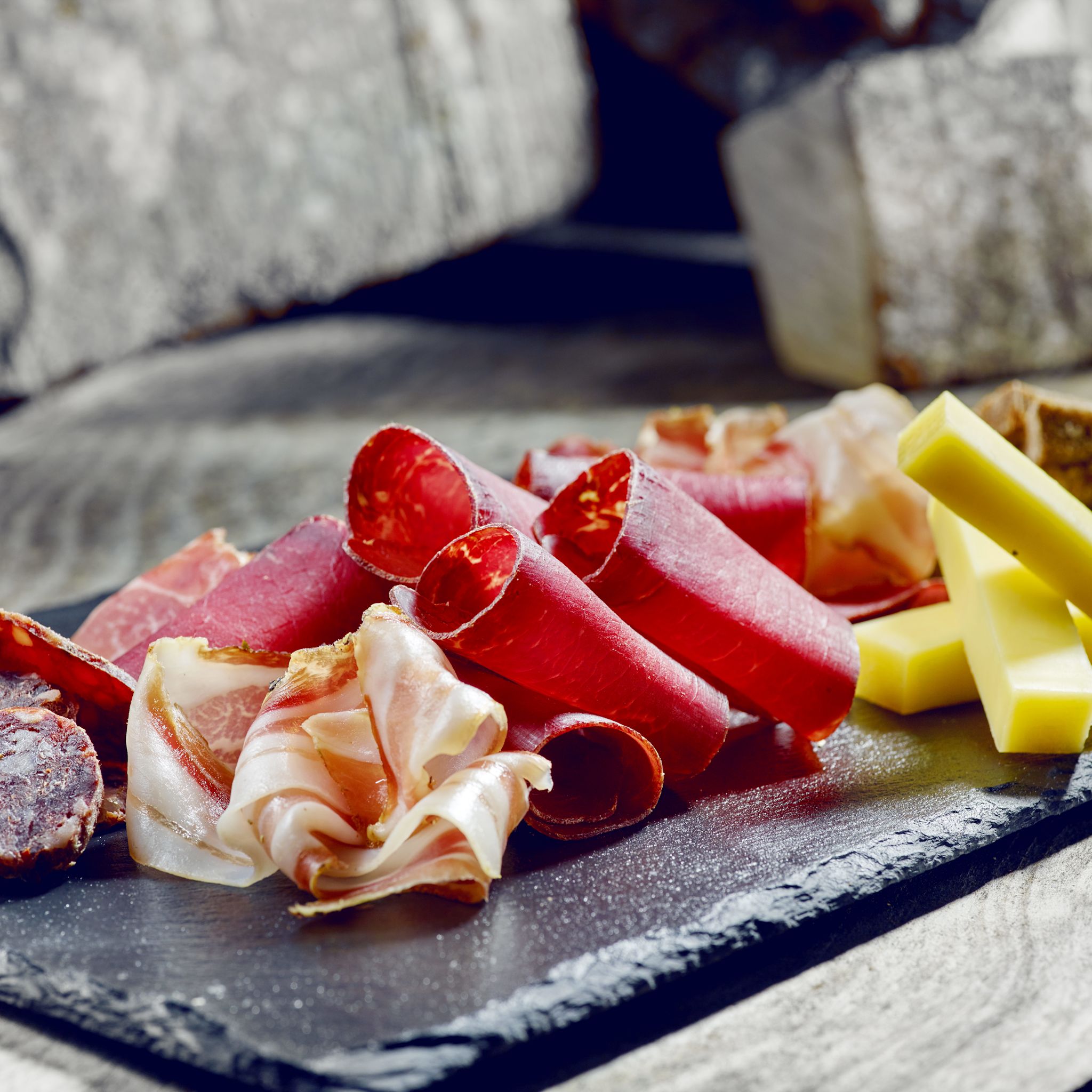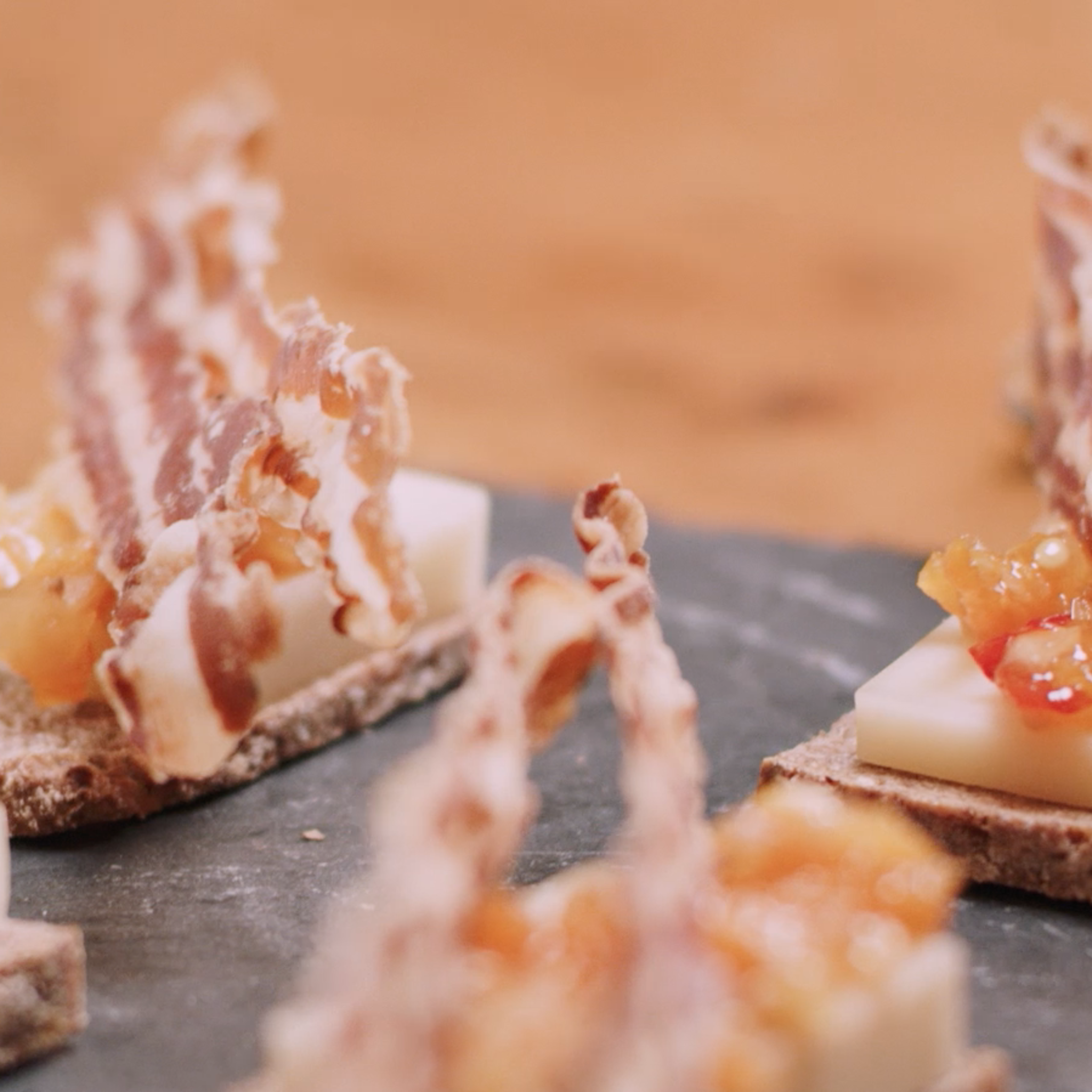Raclette

A source of pleasure and conviviality
The presence of cheese in Valais has been documented since the 4th century BC. Alpine cheese was famous during the Roman period. Later on, it was often used as a means of payment, in lieu of wages to workers or as an export product. Cheese melting has been known in Valais as far back as the year 1574. The term ‘Raclette‘ comes from the local French dialect (racler = to scrape), and it became the official name for this cheese in 1874.
To this day, Valais cheese makers follow a recipe which has been passed down for generations, taking raw milk and making into the best and most authentic product which Valais has to offer: Raclette du Valais AOP.
Good to know
Season: all year
Composition: Raclette du Valais is a semi-hard cheese from the mountains, made from full-fat untreated cow’s milk
Storage: in a cool place, away from the light. Keeps 6-8 months
Area of origin: the milk is produced and the cheese is made only in Valais, in a dairy or at a farm on the alpine pastures
Appearance, taste/flavour: the wheels are round and show the region of origin stamped on the side. The alpine plants on which the cattle feed impart their flavour to the Raclette, so the taste of the cheese varies depending on where the cows graze. A fresh taste (like fresh butter or cream) with a slightly acid tang dominates the floral and fruity notes in Raclette du Valais. In other forms of Raclette to be eaten sliced, a salty, slightly milky flavour with a mildly acid tang dominates the floral and fruity notes.
Criteria for the AOP label
Raclette du Valais is made with untreated cow’s milk.
The cheese is made in traditional cheese dairies.
The milk is produced, and the cheese made and matured, exclusively in the canton of Valais – with the exception of the alpine pastures of Spittelmatten, located in the municipality of Kandersteg (canton Bern).
Quality is checked regularly by experts.
The only permitted ingredients are milk, water, salt, rennet, starter cultures and cheese smear.
How to enjoy
Raclette can be enjoyed sliced, as part of an “Assiette valaisanne” (“Valais platter”) or to accompany a “brisolée” (roast chestnuts served with cold meat and cheeses). But it is in melted form that the cheese has won fame. Accompanied by boiled unskinned potatoes, silverskin onions and small pickled gherkins, a Raclette is a delicacy best shared with friends or family. Purists prefer the wheel of cheese to be heated by a wood fire, but Raclette grills for half-wheels of cheese and electric Raclette grills (also called “raclonettes”) allow devotees to enjoy the dish at home. The ideal accompaniment to a Raclette: a glass of white Fendant wine from Valais.
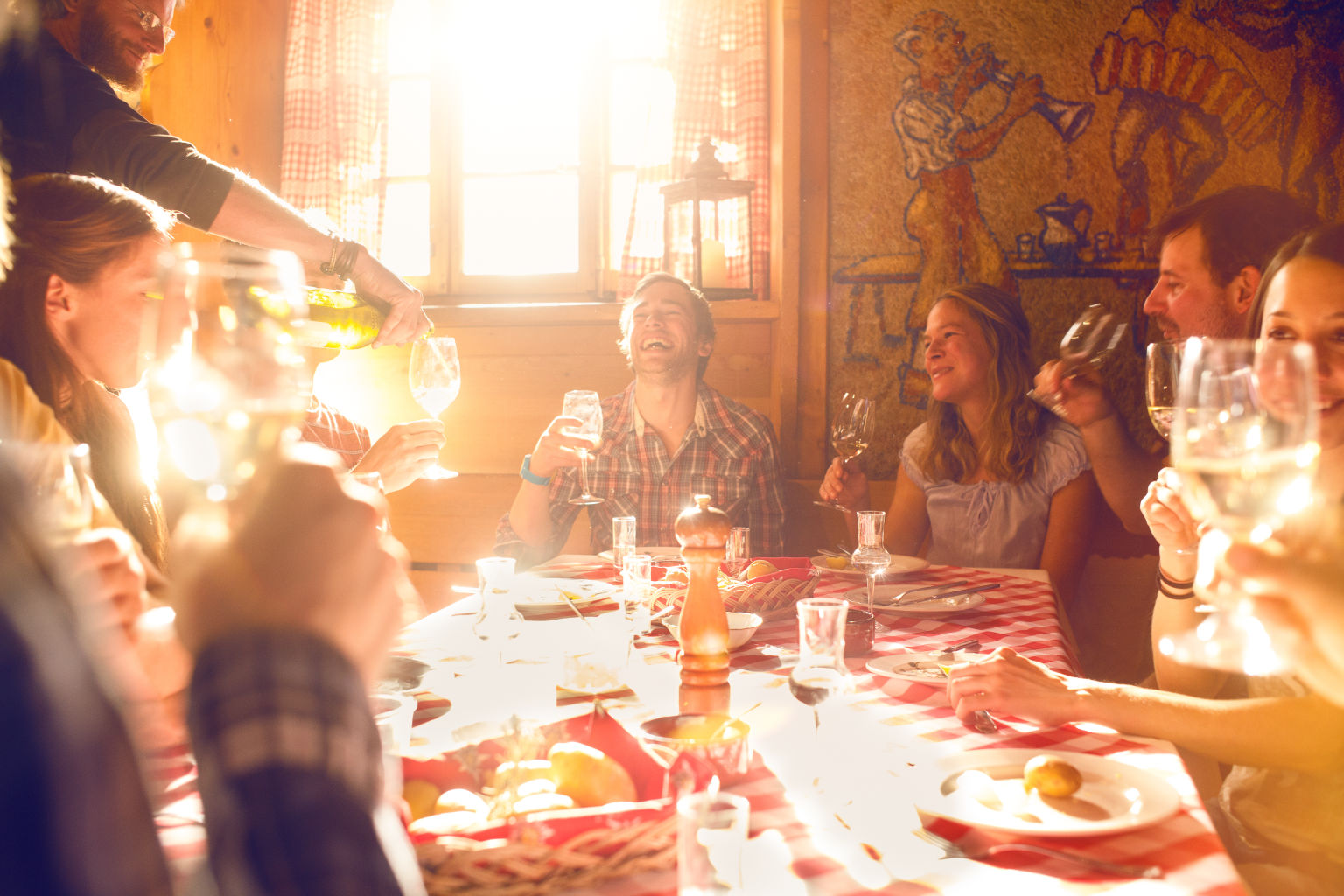
Did you know?
People in Valais talk both of “la raclette” and “le raclette”. “La raclette” refers to the dish based on melted cheese; the cheese itself is known as “le raclette”.
The side of the wheel of cheese shows its origin, stamped in the crust: for example, Bagnes, Gomser, Wallis 65, etc. It is therefore possible to verify at any time where and when the cheese was made.
Raclette cheese melts at a temperature of 40°C.
The first evidence of the presence of cheese in Valais dates from the 4th Century BC. During the Roman era, it was used as a means of payment.
The practice of serving cheese melted in Valais dates at least to 1574.
Raclette is lactose- and gluten-free.


